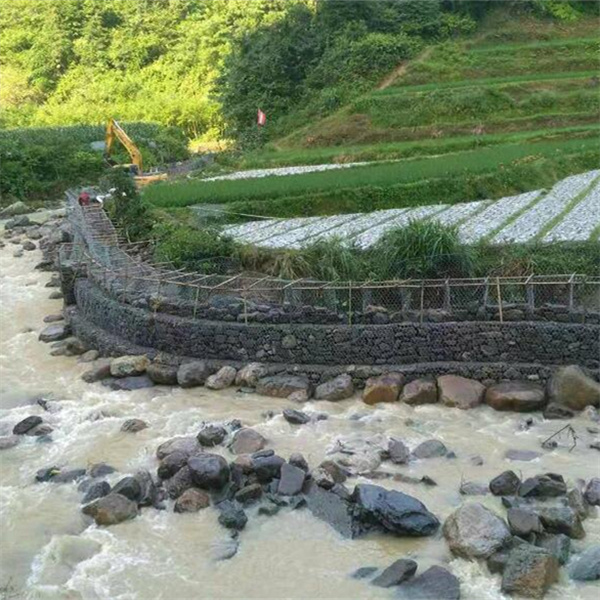Dec . 17, 2024 09:23 Back to list
filling gabion baskets suppliers
Filling Gabion Baskets A Comprehensive Guide for Suppliers
Gabion baskets have emerged as a versatile and environmentally friendly solution for various construction and landscaping applications. These wire mesh containers filled with rocks, stones, or other materials are increasingly popular among suppliers and clients alike. This article discusses the process of filling gabion baskets and highlights its significance in the industry.
What are Gabion Baskets?
Gabion baskets are typically made from high-quality steel wire that is coated to resist corrosion. They come in various shapes and sizes, designed to accommodate different project needs. The purpose of gabion baskets is multifaceted; they can be used for erosion control, retaining walls, drainage solutions, and decorative landscaping features.
Importance of Filling Gabion Baskets
The filling process is crucial not only for the structural integrity of the installation but also for aesthetic value. Properly filled and laid gabion baskets provide robust solutions for earth retention and prevent soil erosion while blending harmoniously into the natural landscape. Suppliers need to pay attention to what materials are used for filling and how they are arranged to achieve optimal results.
Choosing the Right Fill Material
When selecting fill material for gabion baskets, the primary considerations include durability, appearance, availability, and cost. Here are some popular options
1. Natural Stone This is the most common filling material. Natural stones add aesthetic appeal and create a natural look that integrates well with surrounding landscapes.
2. Recycled Materials Some suppliers offer recycled concrete or construction debris as fill material. This option is not only eco-friendly but also cost-effective.
3. Gravel Suitable for drainage applications, gravel allows water to flow through easily, making it ideal for sites that require proper drainage.
4. Boulders For a more rugged appearance, larger boulders can be used. They are particularly useful in enhancing the stability of the structure.
filling gabion baskets suppliers

5. Vegetative Fill In certain projects, suppliers can incorporate soil mixed with vegetation for a more natural look, encouraging further integration with the landscape over time.
Filling Techniques
The method of filling gabion baskets can significantly influence their performance and durability. Here are some common techniques employed by suppliers
1. Layering It is advisable to fill gabion baskets in layers. By placing larger stones at the bottom and gradually adding smaller stones, suppliers can ensure stability and minimize movement.
2. Compaction Depending on the material used, light compaction may be necessary. This helps eliminate empty spaces within the basket, resulting in a solid structure.
3. Interlocking For larger stones, suppliers can arrange them in a way that allows for interlocking, further enhancing the stability of the basket.
Transportation and Installation
After filling, gabion baskets are often quite heavy, necessitating careful planning for transport and installation. Suppliers must ensure that the appropriate equipment is used, such as forklifts or cranes, to safely handle these bulky items.
It is also essential to provide clear instructions for installation to clients. Proper placement is critical to maintain the intended purpose, whether for erosion control, aesthetic enhancement, or structural support.
Final Thoughts
As suppliers of gabion baskets, understanding the nuances of filling these structures is key to delivering quality solutions. Whether choosing the right materials, employing the correct filling techniques, or advising clients on installation, suppliers play a vital role in the success of gabion applications.
By prioritizing best practices and sustainability, suppliers can not only enhance their reputation but also contribute positively to the environment and the communities they serve. The growing demand for eco-friendly and effective construction solutions ensures that gabion baskets will remain an essential product in the market, making it vital for suppliers to stay informed and adaptable to the evolving landscape of construction and landscaping needs.
-
Visualizing Gabion 3D Integration in Urban Landscapes with Rendering
NewsJul.23,2025
-
The Design and Sustainability of Gabion Wire Mesh Panels
NewsJul.23,2025
-
The Acoustic Performance of Gabion Sound Barriers in Urban Environments
NewsJul.23,2025
-
Mastering the Installation of Galvanized Gabion Structures
NewsJul.23,2025
-
Gabion Boxes: Pioneering Sustainable Infrastructure Across the Globe
NewsJul.23,2025
-
Custom PVC Coated Gabion Boxes for Aesthetic Excellence
NewsJul.23,2025
-
Installation Tips for Gabion Wire Baskets in Erosion Control Projects
NewsJul.21,2025






